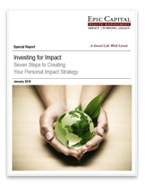Creating an Investment Portfolio
Jun 9, 2023
 You’ve identified your goals and done some basic research. You understand the difference between a stock and a bond. But how do you actually go about creating an investment portfolio? What specific investments are right for you? What resources are out there to help you with investment decisions? Do you need a financial professional to help you get started?
You’ve identified your goals and done some basic research. You understand the difference between a stock and a bond. But how do you actually go about creating an investment portfolio? What specific investments are right for you? What resources are out there to help you with investment decisions? Do you need a financial professional to help you get started?
A good investment portfolio will spread your risk
It is an almost universally accepted concept that most portfolios should include a mix of investments, such as stocks, bonds, mutual funds, and other investment vehicles. A portfolio should also be balanced. That is, the portfolio should contain investments with varying levels and types of risk to help minimize the overall impact if one of the portfolio holdings declines significantly.
Many investors make the mistake of putting all their eggs in one basket. For example, if you invest in one stock, and that stock goes through the roof, a fortune can be made. On the other hand, that stock can lose all its value, resulting in a total loss of your investment. Spreading your investment over multiple asset classes should help reduce your risk of losing your entire investment. However, remember that there is no guarantee that any investment strategy will be successful and that all investing involves risk, including the possible loss of principal.
Asset allocation: How many eggs in which baskets?
Asset allocation is one of the first steps in creating a diversified investment portfolio. Asset allocation means deciding how your investment dollars should be allocated among broad investment classes, such as stocks, bonds, and cash alternatives. Rather than focusing on individual investments (such as which company’s stock to buy), asset allocation approaches diversification from a more general viewpoint. For example, what percentage of your portfolio should be in stocks? The underlying principle is that different classes of investments have shown different rates of return and levels of price volatility over time. Also, since different asset classes often respond differently to the same news, your stocks may go down while your bonds go up, or vice versa. Though neither diversification nor asset allocation can guarantee a profit or ensure against a potential loss, diversifying your investments over various asset classes can help you try to minimize volatility and maximize potential return.
So, how do you choose the mix that’s right for you? Countless resources are available to assist you, including interactive tools and sample allocation models. Most of these take into account a number of variables in suggesting an asset allocation strategy. Some of those factors are objective (e.g., your age, your financial resources, your time frame for investing, and your investment objectives). Others are more subjective, such as your tolerance for risk or your outlook on the economy. A financial professional can help you tailor an allocation mix to your needs.
More on diversification
Diversification isn’t limited to asset allocation, either. Even within an investment class, different investments may offer different levels of volatility and potential return. For example, with the stock portion of your portfolio, you might choose to balance higher-volatility stocks with those that have historically been more stable (though past performance is no guarantee of future results).
Because most mutual funds invest in dozens to hundreds of securities, including stocks, bonds, or other investment vehicles, purchasing shares in a mutual fund reduces your exposure to any one security. In addition to instant diversification, if the fund is actively managed, you get the benefit of a professional money manager making investment decisions on your behalf.
Note: Before investing in a mutual fund, carefully consider its investment objectives, risks, charges and expenses, which are outlined in the prospectus that is available from the fund. Obtain and read a fund’s prospectus carefully before investing.
Choose investments that match your tolerance for risk.
Your tolerance for risk is affected by several factors, including your objectives and goals, timeline(s) for using this money, life stage, personality, knowledge, other financial resources, and investment experience. You’ll want to choose a mix of investments that has the potential to provide the highest possible return at the level of risk you feel comfortable with on an ongoing basis.
For that reason, an investment professional will normally ask you questions so that he or she can gauge your risk tolerance and then tailor a portfolio to your risk profile. Keep an eye out for our next article where we go over the different types of investment professionals.
For more insights and resources, be sure to sign up for our Weekly Market Commentary. Follow our YouTube channel where we regularly post our Epic Market Minute videos. Follow us on LinkedIn, or like us on Facebook. And as always, please don’t hesitate to reach out to a dedicated service professional at Epic Capital.
Tags: Certified Financial Advisor Charlotte NC, Certified Financial Planner Charlotte NC, charlotte NC, Current Events, financial advisor, financial advisor charlotte nc, Financial Planner Charlotte NC, Investing, Investment Planning, Investment Portfolio, Personal Finance
More Insights
Key Takeaways Volatility came back with a vengeance this week as selling pressure in the mega cap space dragged down the broader market. Counterbalancing weakness in these heavyweight names poses a challenge for the rest of the market. Overbought conditions can also be blamed for the recent weakness. The S&P 500 reached a 14.9% premium … Continue reading “Market Update – Assessing the Technical Damange”
Life insurance can be an excellent tool for charitable giving. Not only does life insurance allow you to make a substantial gift to charity at relatively little cost to you, but you may also benefit from tax rules that apply to gifts of life insurance.
When you think of Social Security, you probably think of retirement. However, Social Security can also provide much-needed income to your family members when you die, making their financial lives easier. Your family members may be eligible to receive survivor benefits if you worked, paid Social Security taxes, and earned enough work credits. The number … Continue reading “Social Security Survivor Benefits”
Information vs. instinct. When it comes to investment choices, many people believe they have a “knack” for choosing good investments. But what exactly is that “knack” based on? The fact is, the choices we make with our assets can be strongly influenced by factors, many of them emotional, that we may not even be aware … Continue reading “Making Investment Choices”
As a business owner, you should carefully consider the advantages of establishing an employer-sponsored retirement plan. Generally, you’re allowed certain tax benefits for establishing an employer-sponsored retirement plan, including a tax credit for establishing the plan and a deduction for contributions you make. In return, however, you’re required to include certain employees in the plan, … Continue reading “Retirement Plans for Small Businesses”
Services
Epic Capital provides the following comprehensive financial planning and investment management services: Learn More >


 Top of Page
Top of Page











